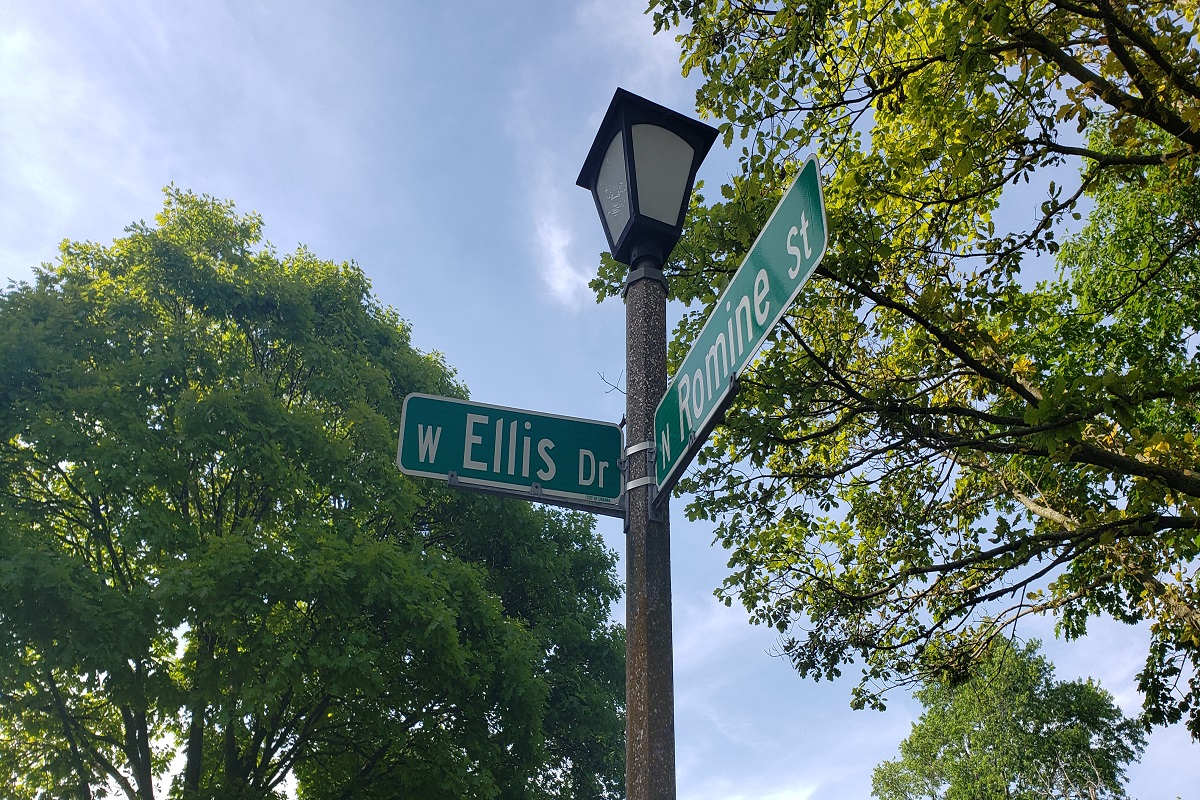The Dr. Ellis Subdivision on the northwest side of Urbana was the first neighborhood developed in the city that allowed Black people to buy a home. Built and annexed into the city in the 60s, the subdivision – and some of the original homeowners – remain today. Reverend Doctor Evelyn Underwood and Bishop Underwood have advocated for, and organized with their neighbors to call on the City of Urbana to remedy a decade-long problem with the sewage system in their neighborhood.
Dating back to 2013, residents of the subdivision have been asking for an equitable solution to a long-standing problem. As their laterals — lines carrying wastewater from under the home to the water main belonging to the city — are disrupted by root systems or otherwise deteriorate over time, residents find sewage backing up into their homes. They make a call to Urbana Public Works, who then visit the site to determine whether the backup is occurring at the point of the water main. If it is not, Public Works informs the resident that the issue lies with the lateral lines and is therefore the homeowner’s responsibility. Public Works is not engaged in the process that follows until it is time to inspect the work that the homeowner has had done.
Repairing a lateral line is an expensive venture. The contractor has to dig deep down to where the laterals are located, repair or replace the section(s) causing the backup, and rebury the line. For residents whose laterals cross the road to the main on the other side, the cost of pulling up and replacing the street and sidewalks — city property commonly referred to as the public right-of-way — figures into the bill as well. Because the subdivision is paved with asphalt rather than concrete, the price is even higher. There are also two mains located within the boundaries of homeowners’ property, requiring that homeowner’s permission to dig up their yard to fix a problem that may not be affecting them.
Uneven distances to sewer mains aren’t uncommon, according to Public Works Director Tim Cowan. In a presentation made to the Urbana City Council, he explained that there are a lot of factors that go into the locations of sewer mains and lateral lines. Not only is gravity a concern in ensuring the wastewater can make it from the home to the main, but other lines must also be avoided such as gas, electric, and storm sewer lines. Cowan acknowledged in his presentation that inequities exist in the cost of repairs for homeowners that live on the opposite side of the street to the water main whose laterals stretch across the public right-of-way and stated that this inequity is not unique to the Dr. Ellis Subdivision, or to the City of Urbana.
Currently, the City of Urbana offers two payment assistance services for those who may not be able to afford the repairs: a reimbursement of up to 95% of the costs associated with public infrastructure based on a fee chart, requiring property owners to pay upfront and submit documentation for reimbursement; and a grant for low-income households which provides upfront funding up to $8,000. Cowan noted that this grant has been used only three times even though it has been offered since 1998. These aren’t the first solutions the city has come to; over the years, the reimbursement has climbed from 50% in 2007 with a $2500 cap to today’s 95% with no cap. However, residents don’t feel that any amount of reimbursement meets their needs. In letters and petitions presented to Urbana City Council, they have called for the City of Urbana to front the cost of repairs in the public right-of-way, rather than reimburse the homeowners. They claim that the standard criteria, process, and requirements have been unclear or inconsistent, causing homeowners to be unwittingly ineligible for reimbursement after having work done.
Elderess Melinda Carr, having moved to Dr. Ellis Subdivision in 2015 and experienced sewer issues herself, has joined her neighbors in advocacy of a resolution. Carr helped to coordinate a petition with the Underwoods and Etha Reid in 2017 with contacts from the subdivision. Gaining more than 100 signatures to reject the reimbursement program in favor of a more equitable solution, the petition resulted in a recommendation of no action by Mayor Marlin at the time. Carr, however, believes that the solutions currently offered are not equitable for the subdivision residents and that it is the city’s responsibility to bring equity into the picture. She notes that the income threshold offered for the grant is too low, requiring a lower income than a person would have to earn to be a homeowner in the area and that equitable infrastructure is a feature in how Urbana City Council has committed to spending American Rescue Plan Act (ARPA) funds. She hopes, along with many others, that the city will use a portion of those funds to find a solution not just for the Dr. Ellis Subdivision, but any area in town where Urbana residents face similar inequities and health and safety hazards.








